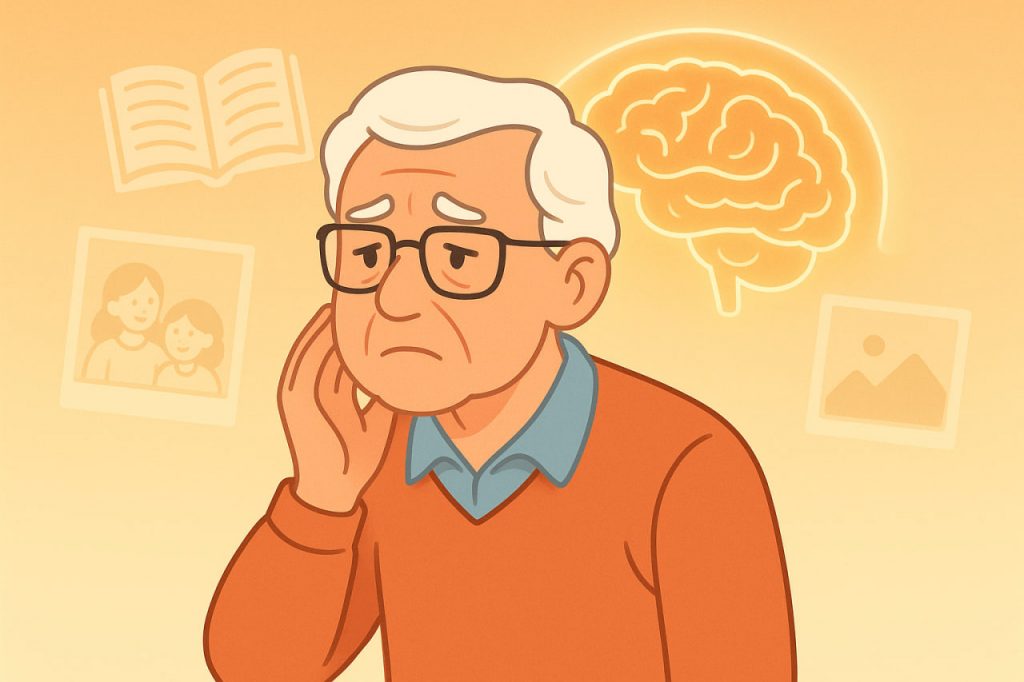Alzheimer’s disease is one of the most profound and challenging conditions affecting humanity today. It slowly erodes memory, reasoning, and identity — the very essence of what makes us who we are. As the most common cause of dementia, Alzheimer’s represents not only a medical problem but also a deeply emotional one for families and societies around the world. Understanding how it develops and how to reduce risk is essential for improving the quality of life for millions.
What Is Alzheimer’s Disease?
Alzheimer’s disease is a progressive neurodegenerative disorder that damages and eventually destroys brain cells. It primarily affects older adults, though it can appear earlier in rare cases. Over time, it leads to memory loss, confusion, disorientation, and behavioral changes.
At the biological level, Alzheimer’s is characterized by two key abnormalities in the brain:
- Amyloid plaques – clumps of protein fragments that accumulate between nerve cells.
- Tau tangles – twisted fibers inside neurons that disrupt cell communication.
These toxic buildups interfere with how brain cells send and receive signals, leading to inflammation, loss of neural connections, and cell death.
How the Disease Progresses
Alzheimer’s develops gradually, often over 10–20 years. Its progression is typically divided into three main stages:
- Early Stage (Mild)
- Short-term memory lapses (forgetting recent events or conversations).
- Difficulty finding words or organizing tasks.
- Subtle personality or mood changes.
- Middle Stage (Moderate)
- Increasing confusion and disorientation.
- Trouble recognizing familiar people or places.
- Sleep disturbances and mood swings.
- Difficulty performing daily tasks, such as dressing or cooking.
- Late Stage (Severe)
- Loss of ability to communicate or recognize loved ones.
- Severe memory loss and cognitive decline.
- Dependence on others for basic care.
- Gradual loss of physical abilities such as walking or swallowing.
The disease is irreversible and ultimately fatal, though supportive care can extend lifespan and improve comfort.
Causes and Risk Factors
The exact cause of Alzheimer’s remains unclear, but scientists believe it results from a combination of genetic, environmental, and lifestyle factors. Key risks include:
- Age: Most common after age 65.
- Genetics: The APOE ε4 gene increases susceptibility.
- Chronic conditions: Diabetes, hypertension, and obesity contribute to brain inflammation.
- Lifestyle factors: Sedentary behavior, poor diet, smoking, and lack of mental stimulation.
- Head injuries: Repeated brain trauma can elevate risk.
How Alzheimer’s Is Diagnosed
Diagnosis involves a combination of:
- Cognitive tests to assess memory and reasoning.
- Brain imaging (MRI, PET) to detect structural changes.
- Blood or spinal fluid tests to identify amyloid or tau proteins.
Early detection is crucial, as it allows families to plan care, adjust lifestyle habits, and begin supportive therapy.
Treatment and Care
There is currently no cure for Alzheimer’s, but several treatments can temporarily slow symptoms or improve quality of life.
- Lifestyle interventions: Physical exercise, balanced diet, and social engagement support brain health.
- Cognitive stimulation: Puzzles, reading, and art therapy can strengthen neural connections.
- Caregiver support: Emotional and social support are vital for both patients and families.
New research, including gene therapy, stem cell approaches, and anti-amyloid antibodies, offers hope for more effective treatments in the future.
Prevention: Can Alzheimer’s Be Avoided?
While aging cannot be stopped, studies show that healthy lifestyle choices can reduce risk significantly.
- Stay mentally active through reading, learning, and creative activities.
- Maintain regular physical activity to improve blood flow to the brain.
- Eat a Mediterranean-style diet rich in fruits, vegetables, and omega-3 fats.
- Keep social connections to protect against depression and cognitive decline.
- Control blood pressure, cholesterol, and blood sugar.
The Emotional and Social Impact
Alzheimer’s doesn’t only affect individuals — it reshapes families and communities. Caregivers often experience emotional exhaustion and stress. Awareness, compassion, and education are crucial to building supportive environments for those living with dementia.
Interesting Facts
- More than 55 million people worldwide live with dementia, most due to Alzheimer’s.
- Women are statistically more likely to develop Alzheimer’s than men.
- The brain can begin developing Alzheimer’s changes decades before symptoms appear.
- Regular exercise may reduce risk by up to 30–40%.
- Alzheimer’s disease is named after Dr. Alois Alzheimer, who first described it in 1906.
Glossary
- Dementia — a group of symptoms involving memory and cognitive decline.
- Amyloid plaque — abnormal protein buildup between brain cells.
- Tau tangles — twisted protein fibers inside neurons that disrupt communication.
- Neurodegeneration — gradual loss of structure and function of nerve cells.
- Cognitive therapy — activities designed to stimulate thinking and memory.

